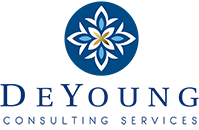 What does Founder’s Syndrome feel like?
What does Founder’s Syndrome feel like?
Founders play a vital role in building their organizations from the ground up. Their vision of making an impact, along with their creativity and drive, create the foundations for their organizations. As the organization grows its own legs, that is, grows in size and capacity, founders may struggle to let go of strategies that previously worked, even when there is evidence that change is needed to support the organization’s health. In our organizational development work, we often see leaders who fear what could happen if they let go of control. These fears and resulting behaviors are so common that there’s a name for it: Founder’s Syndrome. Below are some examples of what founders fear during this common experience:
- If they let go, the organization’s supporters will also let go.
- If they let go, the focus of the organization will shift.
- If they let go, they would no longer have a purpose.
- If they let go, everything will fall apart.
- No one cares as much as they do.
- No one can do the job as well as they can.
- No one understands the mission as well as they do due to their life experience.
- Family members serving on the board will be asked to leave.
- They are no longer valued.
We cannot blame the founders for entertaining such fears. The organization is a result of their dreams and aspirations, and the fear of losing their “baby” can feel crippling. Any parent who has nurtured their children, then watched them leave home to spend their lives with someone else, can understand founders’ tight attachment. However, the organization cannot grow to fulfill its mission without allowing others to take it to the next level. People who work for these founders also struggle in ways that are similar across organizations. These employees experience difficulties such as:
- Dependency on the unique style of the founder instead of relying on structures and systems that are built to sustain the organization
- Ongoing financial troubles
- Employees are afraid of the founder
- Confusion over what’s going on
- High turnover of staff and board
Why Organizations Experience Founder’s Syndrome
All the work we do at DeYoung Consulting Services is around organizational change and growth. Organizations naturally go through stages of growth and evolution. In an initial stage of growth, organizations are often driven by a more creative style. When we’ve worked with organizations at this stage, we see how skillfully founders manage “by relationship,” leading their organizations through an intense focus on the cause and mission, which attracts others with similar beliefs. Staff will often talk about feeling like one big family, and they all wear many hats. At this stage, the knowledge, tenacity, creativity, and flexibility of the founder are crucial to the success of the organization. Most decisions are made by the founder and because there is a relatively small number of employees, it is fairly easy to communicate goals and direction. The system is unstructured, and there are few processes or procedures. When we work with organizations in this stage, it can feel very exciting, and founders flourish. Some organizations can stay in this stage for decades.
However, as the organization grows and becomes increasingly complex, we often see a need to formalize structures and systems, and clearly define roles and responsibilities. New staff sometimes complain about unclear practices. The board may speak of ongoing problems going unattended, and funders might question how grants are spent. The strengths of the founder can then become liabilities.
Organizations experiencing this tension are growing out of one stage and moving into another. We recognize five stages of organizational evolution: Startup, Growth, Maturity, Critical, and Revitalization. Each stage presents its own characteristics and challenges. Some organizations do not make it past the startup stage, while some go on to become world-class organizations and household names because of how they manage the challenges of each stage.
Evolving beyond the Startup stage into the Growth stage depends on addressing critical challenges such as process and structure, management and leadership, and decision-making.
Addressing Founder’s Syndrome and Evolving into the Growth Stage
How an organization handles its challenges and explores opportunities will determine its survival and development. After surviving the Startup stage, an organization begins a stage of growth where the focus is to expand its services or programs. More people will be involved, and leadership will be tested as their focus shifts to managing people. On the financial side, expenses will increase and revenue management can affect cash flow.
To transition into this more mature, well-planned, and managed stage, addressing Founder’s Syndrome is critical. It requires intentional infrastructure, as well as a shift from an individualistic leadership style to one that is more consensus-oriented. Strong board effort is needed as well, although boards must be careful to not place all the blame on founders. The stereotypes of Founders Syndrome are broad and can also be recognized in many other non-founder leaders. To that end, boards should instead see this transition as an overall governance issue. While some boards pave the way for a smooth transition of leadership, others invest in developing the founder’s skills.
The board can take actions that will provide predictability in governance and structure, such as developing a strategic plan that clarifies goals and how to achieve them, discussing term limits and other bylaws, developing a finance committee to address any budgeting challenges, and implementing leadership development and evaluation plans. By focusing on the mission, the board may determine how best to leverage the founder’s skills and plan for filling skills gaps. Founders, too, can take intentional actions such as seeking leadership coaching, supporting the board in strategic planning, and collaboratively developing staff job descriptions that differentiate between roles and responsibilities.
Finally, Founder’s Syndrome is not an uncommon phenomenon, it is a reality of almost everyone with the mission of making a change. Allowing another person to share your “baby” can be difficult, but every founder must learn to let go so that the “baby” can grow to become the best that it can be. It takes one person to have a vision, but it takes a village to make the vision a reality.
